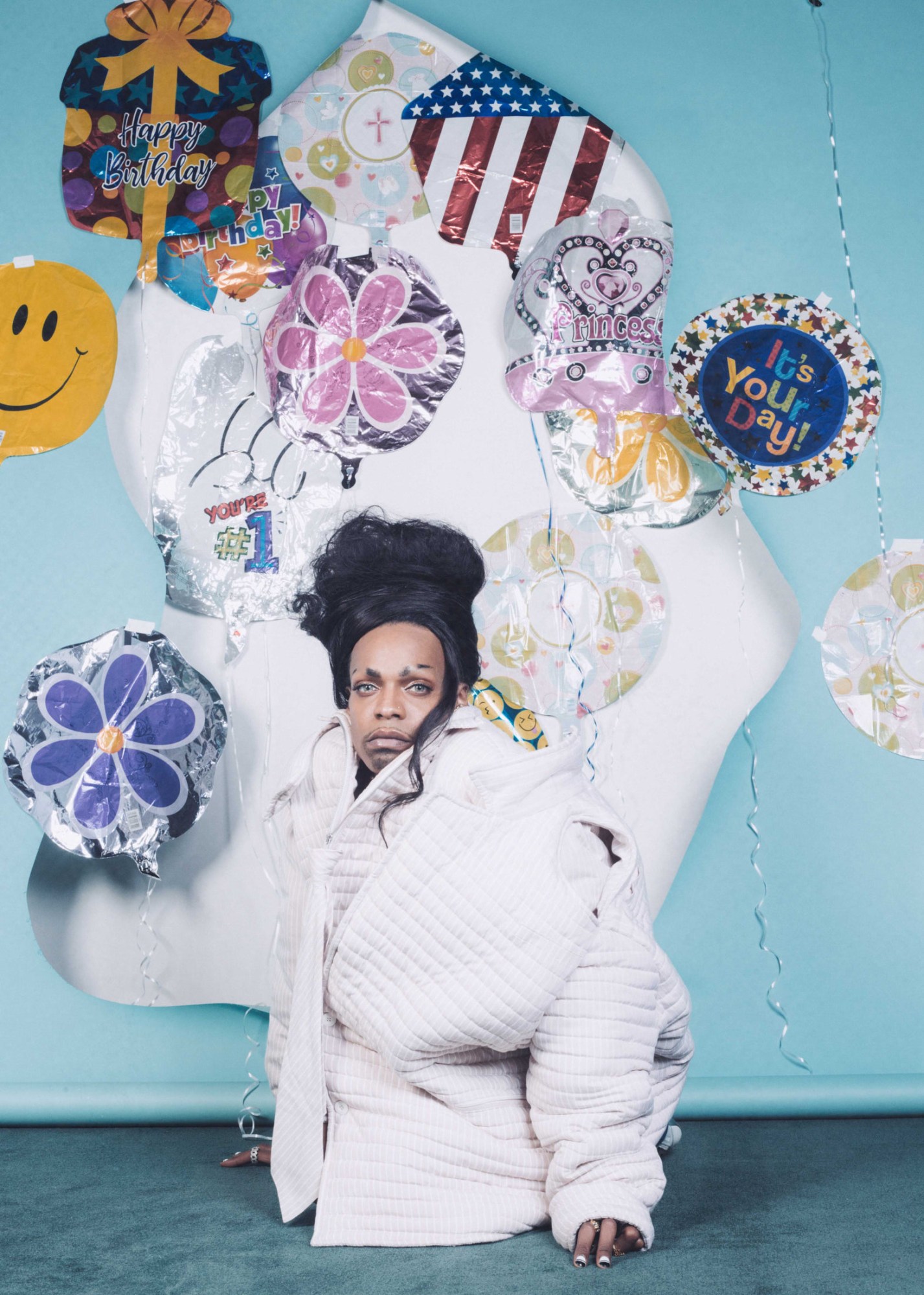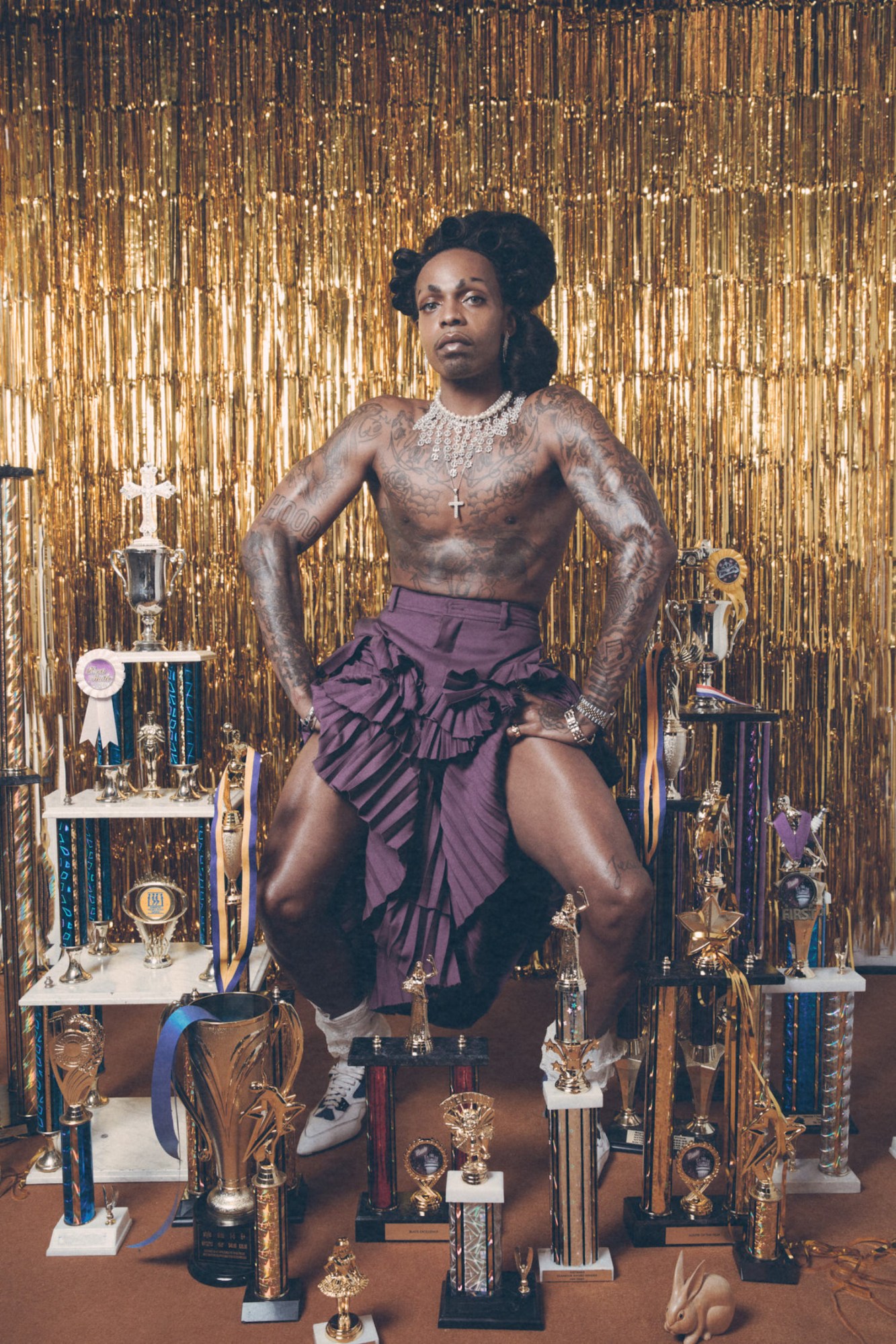Kevin Hunter’s decade-long trajectory through the fashion industry is one that sounds familiar. Starting out in New York as a stylist’s assistant, he later went on to work as a fashion editor and market editor at some of the industry’s great glossy titles. He continues to contribute to them from his new base in Sydney, Australia, but, despite the acclaim he’s long received for his work, he’s never felt that his voice — a Black man’s — has ever truly been heard. Rather than sit around and wait for the industry’s gatekeeping forces to change their tack, he decided to take matters into his own hands, pairing up with Bryce Thomas, a Sydney-based photographer and close friend, to bring Justsmile to life.
A publication dedicated to “creating a support network for Black and POC creatives, to giving them an opportunity,” it was born of a mutual realisation regarding the lack of expansive, representative worldviews in Australian fashion media, Kevin says. “We both found that there weren’t that many people who were interested in shooting Indigenous people, or people from different nationalities and backgrounds. No one really wanted to take the kind of photos that we’re creating.”

“I now feel that as a creative, especially given the current state of the world, you don’t need a big publishing house behind you,” he continues. “This is the era of ‘do it yourself’. It’s so important that, if you have an idea or a thought, you get it out there — just do it yourself. That’s really what Justsmile was about. We don’t need big names behind us to push us forward.”
That doesn’t mean that they’re lacking in that department — two of the inaugural issue’s three cover stars are critic and writer Antwaun Sargent, shot by Aijani Payne, and R&B renegade Ian Isiah, shot by Justin French. Beside them, though, are names you may be less familiar with. “We’re about creating space for emerging artists to tell their stories, as well as more established ones, too,” Bryce says. “Just because someone isn’t prolific doesn’t mean that voice means any less.”
The end result is a publication that feels apt for its time, and the future we hope to work towards — dynamic, positive and community-minded. As Justsmile’s print and digital editions launch today, founders Kevin and Bryce fill us in on the story behind it, accompanied by exclusive images from Justin’s Ian Isiah cover shoot.

Could you tell us the story behind the title?
Bryce: We’ve had the craziest reactions to it! We were just brainstorming, and different things resonated with Kevin as we went through different names. But one day, I was looking at the first fashion editorial we did together, and my favourite image is of this SoundCloud rapper: he’s wearing a Prada scarf, has fluoro green hair and is just smiling. It’s completely different from anything else and I just love that image — it makes me so happy. So I just wrote ‘Justsmile’ down and it kind of just stuck.
Kevin: There’s not an especially deep meaning behind it, but it also had a lot to do with the fact that the world was in such a dark place at the time, and we were like, ‘Everyone just really needs to smile for a second, take a second to breathe.’
So what are your main aims with Justsmile?
Kevin: It’s a publication open to everyone, but for me personally, it was really about giving an opportunity to Black and POC artists, and giving Black men the opportunity and space to tell their stories and be unapologetically Black in doing it, to not be filtered. I wanted to help uplift the voice of Black male creatives — whether photographers, casting directors or designers — and present them in a space that’s refined. Working in the industry for 10 years, I’ve always felt like my voice was never heard. We’re always being seen in front of the camera, but we need to be seen behind the scenes, too.
Bryce: I think we were in a very fortunate position to start something from scratch. We were able to take diversity into account when it came to things like art direction and graphic design, both of which are very whitewashed industries. We were very fortunate that we were introduced to Anthony Bryant, our art director. It wasn’t like we had to have a Black art director, but it was more that if we could hire someone, why not look into it and see who’s around? Let’s put the effort in. It’s really easy to just go on LinkedIn and see what art directors are in Sydney. It was really about creating a genuinely inclusive space.
Kevin: And amazing things came out of that. From one of our first meetings, Anthony was referencing Black family photo albums from the 70s as a way of laying out photos, which you can see if you look at the Ian Isiah story.
Bryce: And then, on the shoots, it was so much about people bringing a warm and inclusive energy. Though we couldn’t be there ourselves, with the Ian shoot, he reached out afterwards and was just like, ‘Hey, I wanted to say that was such a fulfilling experience.’ Even from the first calls we had with him, he was so into it, and was like, “I’m gonna bring all this archive Hood By Air, I’m so inspired!”

That sense of positivity informs the core values of the publication: family, individuality, uplift and happiness. Why was it so important to lead with such unambiguous optimism?
Kevin: When it came down to picking the people that we’ve featured on the cover, like Antwaun Sargent, for example, his whole thing is uplifting the next generation of Black photographers. When it came to Ian, he represents what it means to be an individual in the truest sense, and showing new forms of Black masculinity. That’s why those pillars are so important. We want to uplift the community, and we want to show people that we can be happy and that we deserve happiness.
Bryce: Another thing is that, even as people who work within fashion, and are inspired by fashion publishing, we’re most receptive to stories in which fashion is used as a vehicle to explore ideas beyond itself. That’s what makes us smile, so those values came really naturally to us.
Another key tenet of the publication is community. What communities does Justsmile represent?
Kevin: For this issue especially, it’s Black creatives. One of my favourite sections in the magazine is called In Practice, in which we focused on four fine artists — Dominic Chambers, Marcus Leslie Singleton, Devin N. Morris and Marcus Brutus — who are all Black and from New York. Their work is just amazing, and they’re part of our community. It was also important to include people who don’t necessarily make fashion pictures, because that’s not what we’re about. We wanted images that tell a story and that evoke a feeling. And so that’s why we worked with Elliott Jerome Brown Jr, for example. We also worked with Justin Mikhail Solomon, a 24-year-old photographer from St. Louis, Missouri, in a section of the magazine called Display, which is essentially a photo essay section. And he did this self-portrait series expressing what it means to be a Black man understanding and learning about your body, and ideas of Black masculinity.

The majority of the fashion in the magazine is menswear, and the predominant focus is on male-identifying artists. What was the reasoning for this focus for the first issue?
Kevin: When we were in the phases of planning out the issue, for me, it was about looking at the state of the world — the uprising that was happening in America, and even in Australia, with Black Aboriginal deaths happening in custody. As such, I wanted to find a way to uplift the voices of Black and POC creatives, and creating a space in which Black males could show their work. For issues moving forward, though, it’s entirely open. Even starting with the next issue, it’s not just focusing on Black creatives, and you will see more people of different gender identities and expressions in the magazine. It’s not a boys club.
Bryce: And we’re not specifically bound by menswear. We have a section in the magazine called Regeneration, in which we profile people from a younger generation, a range of gender identities, and from so many different backgrounds and industries. For this issue, it was Regeneration Australia, and in future issues, we’re going to take it to different places.
What about this period in time do you hope Justsmile reflects?
Bryce: The sense of community. I don’t know if it’s because we’re stranded in Australia, connecting with everyone online, or that I feel more adult than ever, but this year has felt like such a supportive and encouraging year.
Kevin: For me, it’s about the interviews that are in the In Practice section. It’s really interesting when you go back and read those, and you see how these artists are dealing with being an artist during a pandemic, and what that means for them. And also the conversation that Justin Mikhail Solomon had with Curtis Taylor Jr. about how it feels to be Black men existing in the world right now. I want people to go back and read those stories and understand how these artists felt during this time — in terms of their creative outlook on things, sure, but also in terms of how they just felt.

This interview has been edited and condensed for clarity.
Credits
Photography Justin French
Styling Ian Isiah

